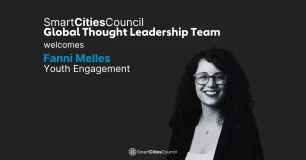
By Avinash S. Patwardhan and Ken Thompson, CH2M
The Internet of Things (IoT) refers to a technology trend well underway in machine-to-machine communication that is poised to radically change the business environment. It is estimated, by 2020, there will be over 50 billion “things” connected to the internet.
Most of these “things” will be sensors, embedded in physical objects and linked together using the same protocols that connect computers on the internet today. These sensors will generate huge volumes of data, enabling users to identify and resolve existing problems as well as optimize their systems. Other physical devices will also be connected that control the very operations being sensed and make autonomous decisions based on data trends.
Data alone provides minimal value until it is processed deriving information and knowledge that leads to insight. With today’s IoT revolution and increasingly large disparate data sets, the use of big data analytics is essential for cities to rapidly process these data sets in a way that minimizes impact to daily operations.
Big Data, Analytics and City Operations
City operators understand that city asset failure disrupts citizen services, resulting in safety, security and health issues, breach of environment regulations and loss of business investments. Therefore, it is critical to use big data and analytics to efficiently manage city assets, proactively flag risk and avoid it when possible. Today many cities and departments are working with multiple systems and solving one problem at a time rather than considering long-term costs and strategic implications. When systems are operating in silos across a city, they generate disparate data sets and cause hours of rework and confusion. As data is so critical for business operations, it must be collected, processed and managed in a cohesive system to be actionable and enable better decisions.
Big Data in Use in Philadelphia
CH2M assisted Philadelphia to implement a Surveillance and Response System (SRS) demonstration project under the U.S. Environmental Protection Agency’s (EPA’s) Water Security Initiative. The objective was to integrate multiple forms of surveillance and data streams through Information and Communication Technology to promote early and rapid detection of a water-supply contamination event.
Data integration combined surveillance components into a centralized platform that was used to determine whether a water contamination event had occurred and to facilitate appropriate response and consequence of management actions. Information from each component was integrated via an innovative event detection dashboard that compiled data and spatial information onto a GIS platform for detection of possible events in real time.
This robust web GIS-spatial dashboard provided automatic event detection, opportunity for preliminary cross-component data analysis and a map display for quick response and coordination among numerous users.
Benefits of Big Data in City Operations
Understanding and evaluating Big Data challenges and using advanced analytics to gain asset knowledge, cities can realize a variety of benefits, which include:
- Cost savings due to proper asset management, quick decision making, and transition from reactive to proactive maintenance
- Operating efficiency by operating assets at peak performance
- Improved city productivity and savings that can be used for other programs
- Better cross-departmental communication through open information sharing
- Citizen communications regarding safety, security and public space
- Increased environmental stewardship by meeting and exceeding environmental regulations
# # #
Dr. Avinash Patwardhan, Vice President and Smart Cities and Senior Technology Fellow, Urban Environments and Sports Group, CH2M
Dr. Avinash Patwardhan brings more than 29 years of experience in planning and implementing sustainable and smart city solutions for urban infrastructure. He led sustainability and smart city planning for Masdar, the first sustainable city in Abu Dhabi, UAE, and for the Shendra Bidkin Industrial Area that’s being developed along the Delhi Mumbai Industrial Corridor in Aurangabad, India. In addition, he has developed and applied emerging and established technologies to projects in the USA, Canada, ASEANIndia, Australia, China, Middle East and North Africa, and UK. Dr. Patwardhan has received two U.S. Patents and authored more than 60 technical papers.
Kenneth Thompson, Deputy Director Intelligent Water Solutions and Senior Technology Fellow, Water Business Group, CH2M
Mr. Kenneth Thompson brings over 35 years of experience in the design and operations of smart technologies and data analysis for the water industry. Mr. Thompson served as the project manager and senior consultant for over $60M of work in the design, implementation, and evaluation of Surveillance and Response Systems for New York City, Dallas Water Utilities, Philadelphia Water Department, and San Francisco Public Utilities Commission. This work was done under the guidance of the U.S. EPA water Security Division. Mr. Thompson has also led the development of integrating new sensors with advanced data analytics to create a holistic approach for addressing non-revenue water problems for water utilities. He serves as the President of the Smart Water Network Council and is the CH2M liaison for the Smart Cities Council.



